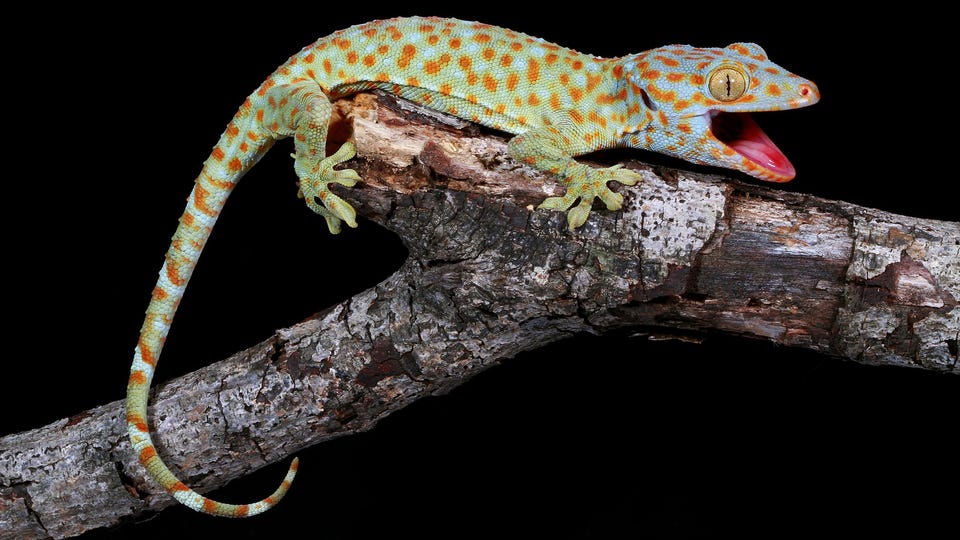Can Geckos Recognize Themselves?


Reptiles have long been considered to be dim-witted and cold-blooded (in more ways than one), but research is beginning to find that they possess an impressive collection of cognitive abilities. For example, a recent study of Tokay geckos, Gekko gecko, has discovered that these lizards can distinguish their own scent from that of others of their species, indicating they possess the ability to recognize themselves as distinct from others, which is the first step in the development of social intelligence. For this reason, we think that geckos may be able to communicate with others of their own kind and thus, they may be more intelligent than we give them credit for.
Although self-recognition is generally thought of as a visual ability, some animals, such as dogs, primarily rely on scent rather than sight. Other scent-oriented animals include reptiles: previous work has shown that lizards and snakes use their tongues to detect pheromones and a variety of other chemical cues. For example, geckos, which are aggressive and territorial lizards, periodically stop whilst climbing through the branches to flick their tongues out to determine whether potential rivals or partners may be nearby. Further, some gecko species create poop piles to mark their territory, suggesting a communication function either aimed at conspecifics or as an anti-predatory function, or both (i. e.; ref). This behavior is similar to that of many mammals, which have preferred areas for defecation to communicate their presence. Based on this information, one might wonder: do geckos use pheromones for social communication?
To answer this question, a team of researchers from the University of Bern investigated whether tokay geckos can detect the skin chemicals that they themselves produce, and whether they can distinguish between their own chemicals and those of other geckos of the same sex.
To conduct these experiments, the researchers presented their study geckos with cotton swabs rubbed in their own odor, odors from other geckos, or control odors such as water or peppermint. All trials were video recorded for later analysis. After initially discovering that the scented cotton swabs were not good to eat, the geckos settled down into detection mode: they stuck out their tongues either in the direction of the odor on the swab or towards the surrounding area, which was their home enclosure.
The researchers interpreted this behavior as a sign that the geckos perceive the odor on the swab, before comparing it to their own odor on the walls of their home enclosure.
“The geckos have to compare more frequently when confronted with the odor of another gecko, compared to their own odor”, explained lead author, behavioral ecologist Birgit Szabo, a postdoctoral researcher at the University of Bern studying cognition and behavior in reptiles. “This indicates that they know their own odor.”
The team also demonstrated that their study geckos detected and used the odors of their feces to distinguish themselves from others. This study revealed that geckos can distinguish their skin and their poop odors from those of other geckos of the same sex, suggesting that they may be able to communicate socially using chemical cues.
“Lizards and reptiles are generally seen as unsocial primitive animals”, Dr Szabo observed. “We must recognize that reptiles are more social and intelligent than we thought.”
Reptiles, birds and mammals diverged from their last common ancestor about 280 million years ago, so this study suggests that some fundamental abilities, such as self-recognition, are either more ancient than first realized or were so adaptive that they arose more than once.
“Reptiles, and especially geckos, are ideally suitable for investigating fundamental questions about the evolution of sociality”, said study co-author, behavioral ecologist Eva Ringler, professor and head of the Division of Behavioral Ecology at the University of Bern.
“Within geckos, we can find a vast range of social structures and habitats. This allows us to investigate the interrelationships of cognition, communication and social living within a small taxonomic group – and make comparisons between these and other, more distantly related groups of animals such as mammals and birds.”
